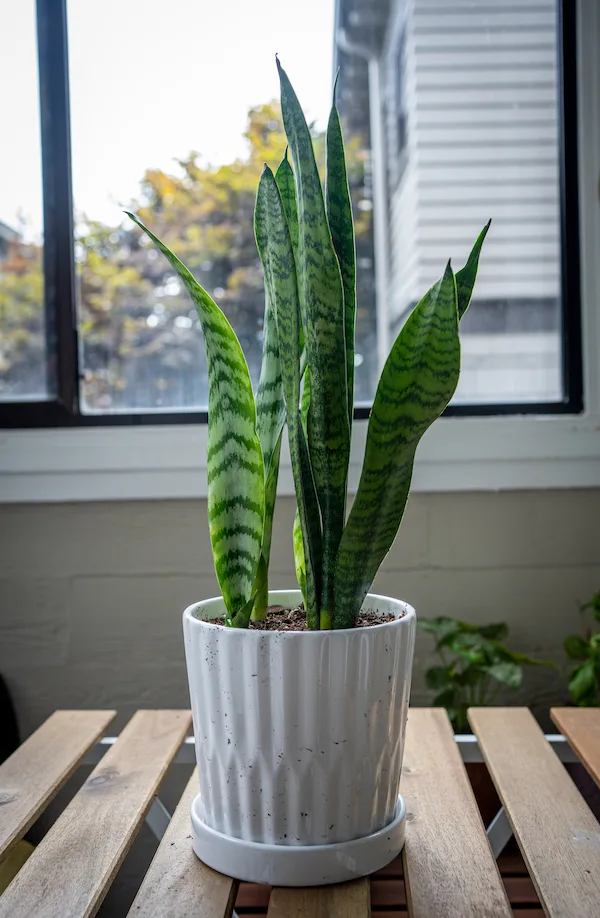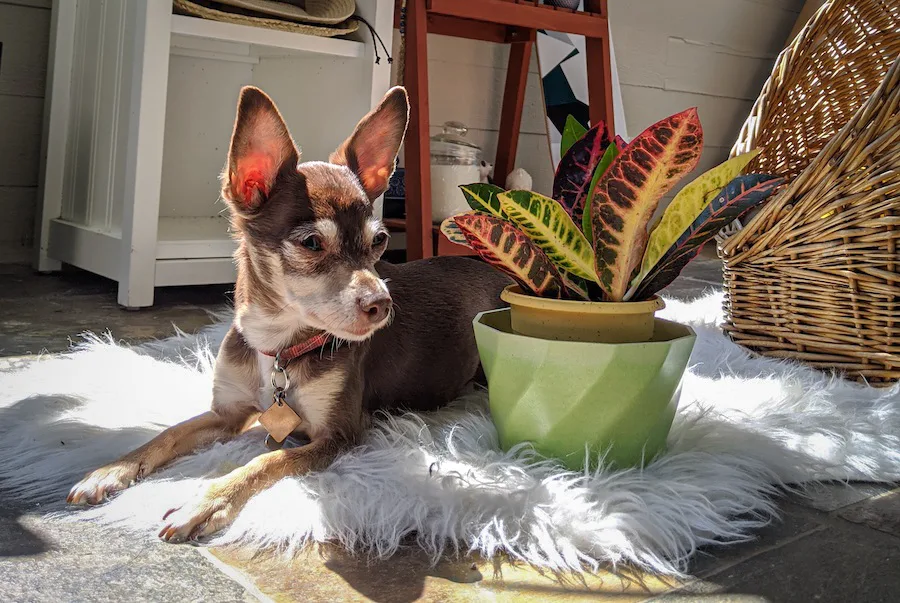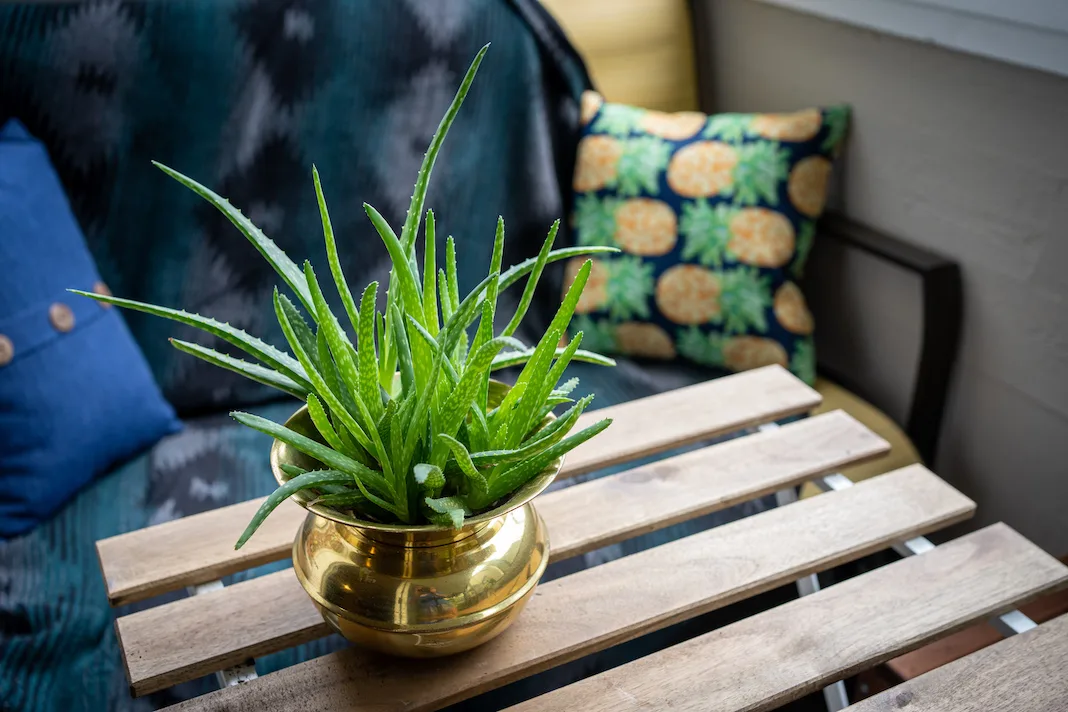Updated: 8/8/2020 | Best Plants for Beginners
For the longest time, I believed I could only able to keep succulents and cacti alive. They were low maintenance, required little upkeep and did not grow much. They were the easiest plants to have!
Then quarantine happened and we could no longer travel and had to hunker down. We decided to invite more plants into our home because now we had the time and attention to care for them properly.
We quickly learned that plants are not that difficult to care for and that our home was a hundred times more beautiful with plants peeking out of every nook and cranny of our abode.
Within months we became crazy plant people and are loving our new life with plants.
https://www.instagram.com/p/CDchT7vBeu8/
If you’re looking for plants that are great for beginners, you’ve come to the right place. We’ll discuss the different types of plants you can get your hands on right now, how to care for them and where to buy them.
Best Plants for Beginners
Here are our top picks for plants for beginners. They’re typically easy to care for and require little maintenance.
#1 Rubber Tree

Burgundy Rubber Tree
Rubber trees are very easy to care for. Our rubber plant has at least one new leaf growth each month. Rubber trees come in various colors and patterns.
How to care for your Rubber Tree:
- Water when the topsoil is 1.5″ dry.
- Wipe the leaves down so that it can absorb sunlight efficiently.
- Keep in a shaded area with lots of sunlight. You can also place the plant in direct sunlight for a few hours each day.
#2 ZZ Plant
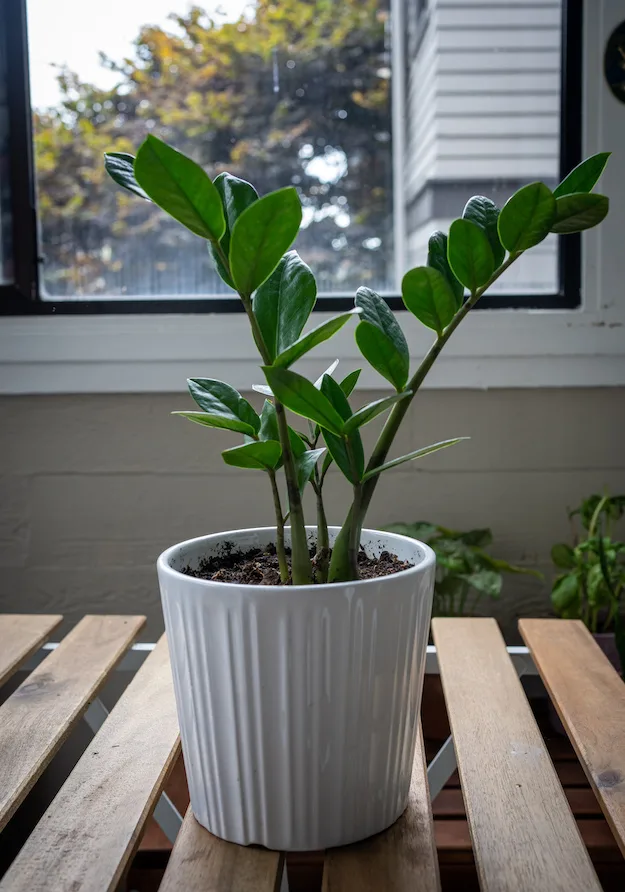
ZZ plants, or zamioculcas zamiifolia, grows great in low light. They possess a dark green hue that is great for any beginner plant collection.
How to care for your ZZ Plant:
- Water your ZZ plant when the topsoil is 1.5-2″ dry.
- Overwatering can cause the stem and rhizome to rot.
- Leave your plant in indirect sunlight.
#3 Prayer Plant
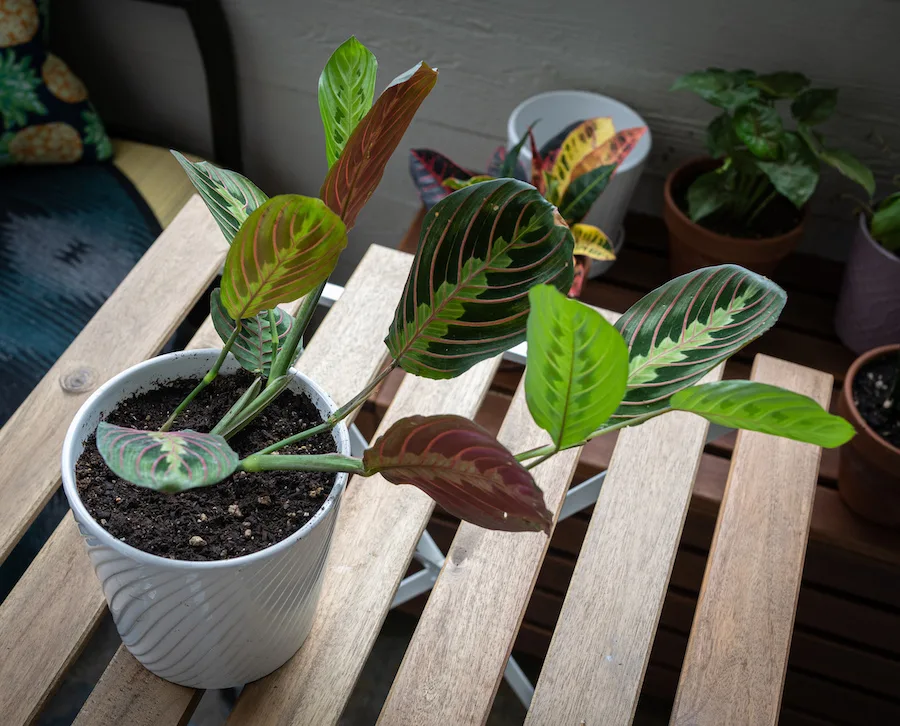
Prayer Plants, or Marantacaea (family), have super veiny leaves and beautiful eye-catching patterns. You can get the plant in red (Maranta leuconeura) and green hues such as the calathea orbifolia.
How to care for your Prayer Plant:
- Keep the soil consistently moist when your Prayer Plant is actively growing in spring and summer. Reduce water from fall through late winter.
- Use lukewarm water when watering your Prayer Plant. Make sure to water the soil only and not the leaves.
- Do not leave the plant in direct sunlight as it will turn the leaves black or become sunburnt.
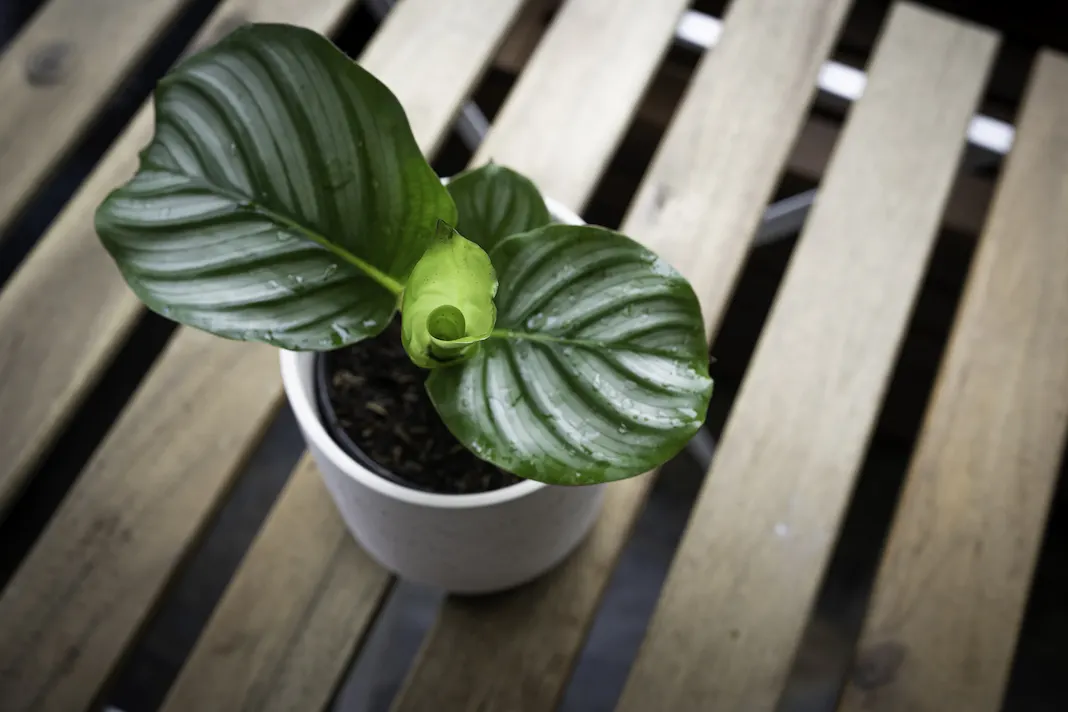
calathea orbifolia
#4 Monstera Deliciosa
https://www.instagram.com/p/CDb3na_hp48/
My Monstera Deliciosa, AKA Swiss Cheese plant, makes me SO HAPPY! Watching new leaves unfurl each month is the best thing to ever happy to me. Within 1 month of owning our monstera, we observed three new leaves grow.
How to care for your Monstera Deliciosa:
- Water it when topsoil is at least 2″ dry
- Let the air roots grow. You can also cut them and propagate them into new plants.
- Keep the plant in a moisturized environment. You can keep it moist using a humidifier or spray bottle with water and spraying the plant at least once a day.
- Give the plant plenty of shaded sunlight. Do not put in direct sunlight because they will get sunburnt.
#5 Dumb Cane
The Dumb Cane, or Dieffenbachia, come in many patterns. They grow nicely indoors with a lot of lighting. Make sure you take them in when it’s super hot outside so that they do not get sunburnt.
How to care for your Dumb Cane:
- Water when topsoil is at least 1.5″ dry. When the plant is larger (over 3 feet), water when topsoil is at least 2″ dry.
- Keep indoors and away from direct light. It can get sunburnt.
- You can separate the plant when it starts to grow more stalks.
#6 Snake Plant
Snake plants, or Sansevieria Laurentii, are SUPER easy to grow and care for. They also grow easily and very tall.
Our snake plant sprouts new babies each month and it’s fun to watch them grow with each passing day.
How to care for your Snake Plant:
- Water when topsoil is at least 1.5″ dry.
- You can leave snake plants in direct sunlight and they will thrive. They will not get sunburnt.
- You can also leave snake plants in low-light areas.
#7 Croton
Crotons are colorful plants that love the sun. The leaves produce a range of veined red, yellow, orange, and green foliage. They can be grown both indoors and outdoors, but prefer to be in areas with a lot of light.
How to care for your Croton:
- Water your croton when the topsoil is at least 1.5″ dry.
- Allow your croton to dry out in between waterings. Thoroughly soak the soil when watering.
- Crotons love a lot of sunlight. Leave it in direct sunlight as often as you can.
- Spray or use a humidifier to keep your croton moist and happy.
#8 Aloe
Aloe Vera plants are a type of succulent that is easy to care for and looks amazing when fully grown.
How to care for your Aloe Vera:
- Water when the topsoil is at least 1.5-2″ dry. Water infrequently as succulents do not require much water. Water every 3 weeks in warmer seasons and less in fall and winter.
- Keep in indirect sunlight.
- Aloe vera can be used topically, but not ingested orally.
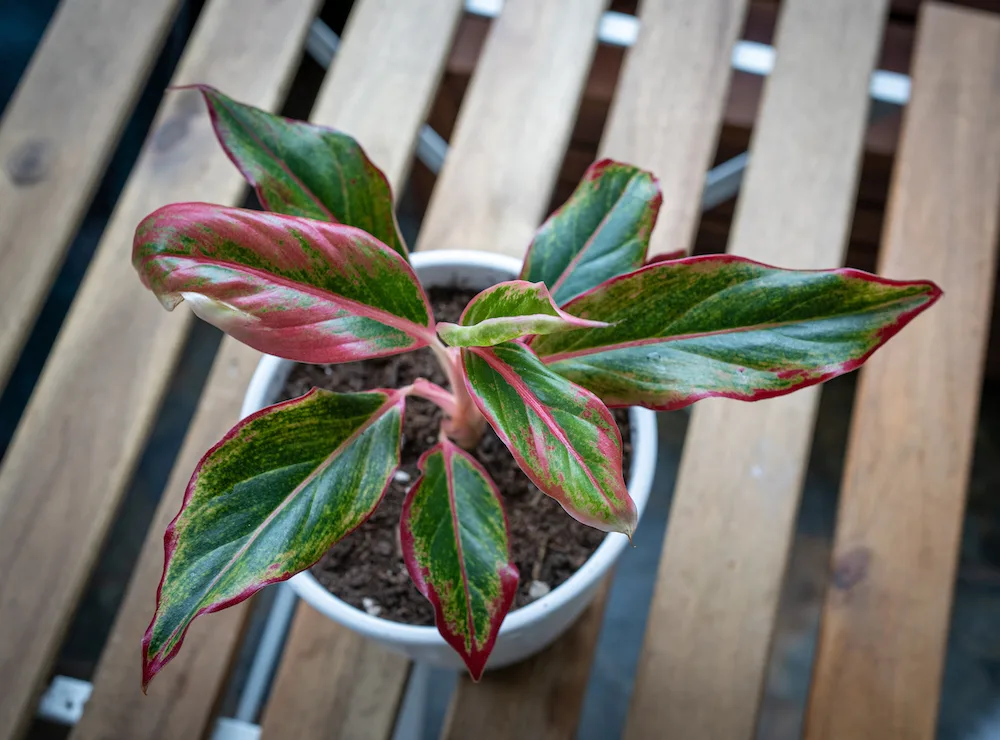
Chinese Evergreen Plant or Red Aglaonema
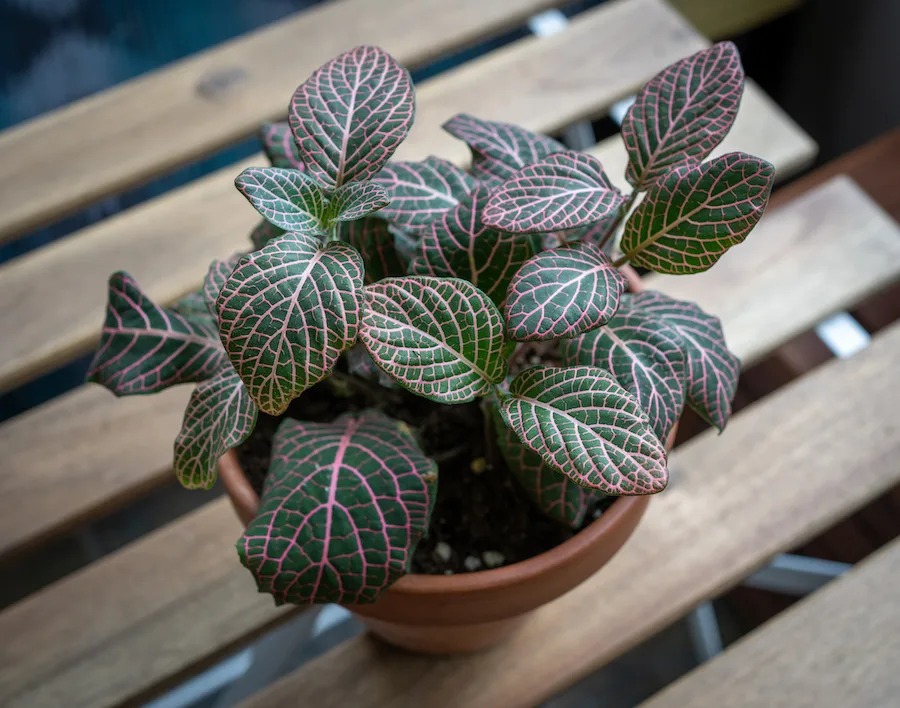
Nerve or Mosaic Plant (Fittonia Albivenis)
How Do I Keep My Plants Alive?
Here are some tips we have to help you keep your plants alive.
- The type of planter you use matters! Terra cotta planters will draw water from the soil and dry out your pants quicker. Ceramic planters will retain water and you will need to water your plants less.
- If you have a gnat infestation problem, simply leave your plants outdoors but in a shaded area so that the topsoil will dry out about 3/4 to 1″. If the topsoil is dry, the bugs will have no place to lay their eggs.
- Always use planters with drainage holes so that your plants don’t drown in water. You can potentially kill your plant from overwatering. If your planter does not have a drainage hole, use a plastic nursery pot with drainage holes and place the plant into the planter.
- DO NOT unfurl new leaves. They will unfurl on their own. You can cause damage to the plant if you force it to unfurl when it is not ready.
- When traveling, make sure you leave clear watering instructions with your roommate or have a friend come by and water your plants regularly.
You can read more plant care instructions here.
We hope our list of plants for beginners and how to care for them was super helpful! We can’t wait to hear about your new plant parent journey. If you have any questions, feel free to e-mail us for more info.
Did you enjoy our plants for beginners post? Please share it on Pinterest! Thank you!
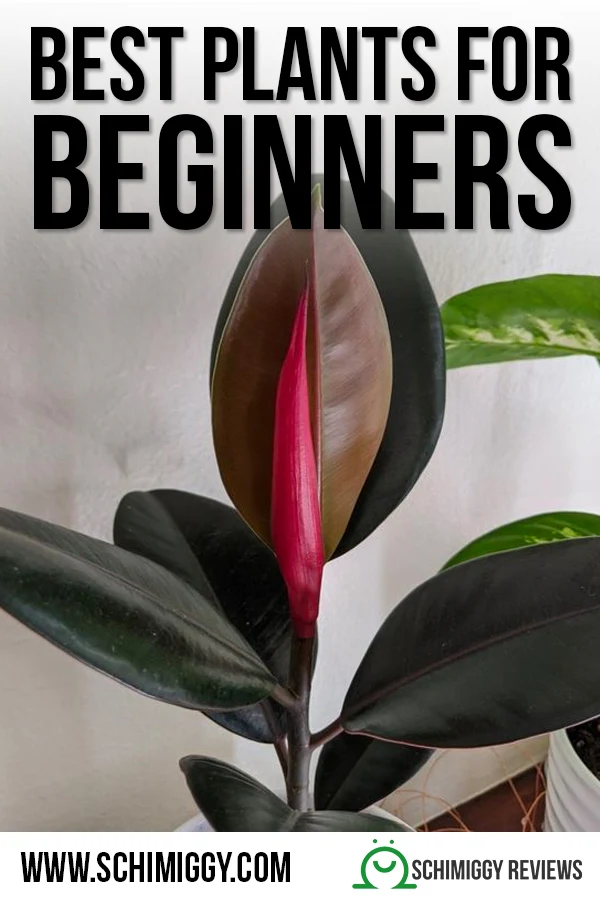
Thank you for visiting today! If you found this encouraging or informative, please connect with us on Instagram or TikTok. Sign up for our monthly newsletter for updates and more. We promise we won't spam you! Feel free to unsubscribe anytime. If you're a brand and want to work with us, please visit this page to get in touch.


